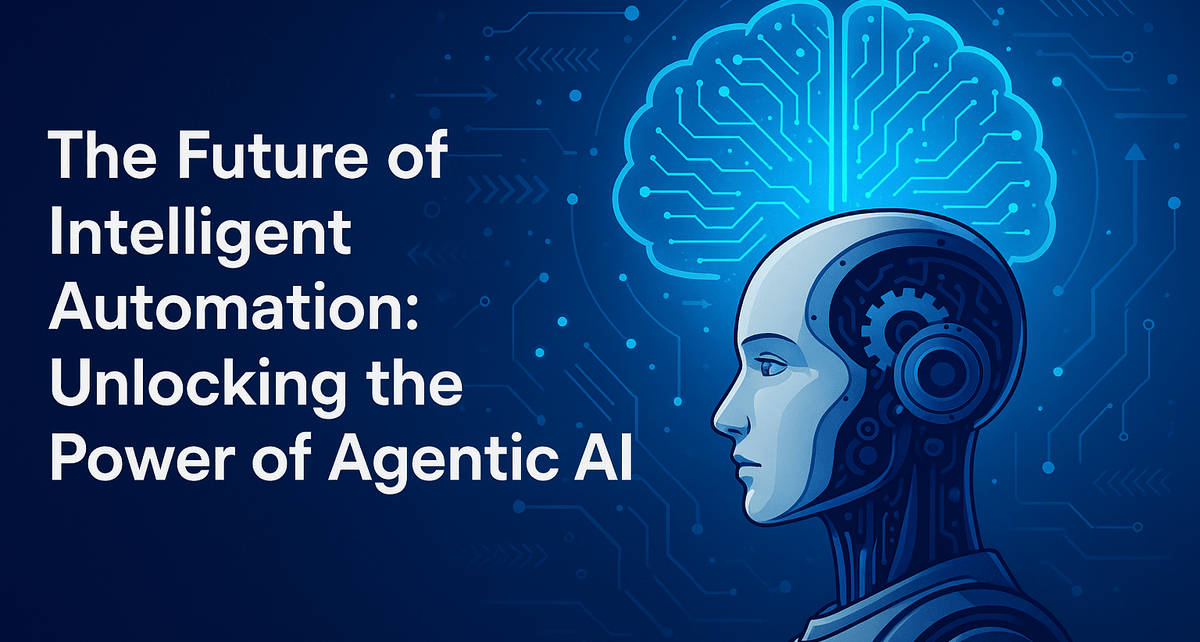Artificial Intelligence has come a long way—from simple rule-based systems to advanced generative models that can create text, images, and even code. But a new wave of AI is emerging that promises to go beyond content generation and static automation. This wave is known as Agentic AI, and it represents a transformative leap in how machines can perceive, plan, and act in the real world.
In this blog, we’ll explore what Agentic AI is, why it matters, real-world applications, and the opportunities and challenges it brings to businesses and society.
What Is Agentic AI?
Agentic AI refers to artificial intelligence systems designed to function as autonomous agents—entities that can set goals, make decisions, and take actions to achieve outcomes without requiring constant human input. Unlike traditional AI models that respond passively to prompts or fixed instructions, agentic AI can:
- Perceive its environment (gather information from multiple inputs)
- Reason about problems and opportunities
- Plan multi-step strategies
- Act by executing tasks or interacting with tools and systems
- Learn from successes and failures to improve performance over time
This autonomy unlocks a new class of applications that were previously difficult or impossible with static AI models.
Why Does Agentic AI Matter?
Agentic AI isn’t just a technical evolution—it’s a strategic shift. The ability for AI systems to operate independently and coordinate across multiple tasks creates significant value for businesses and society.
- Scalability: Instead of building one-off automations, organizations can deploy agents that adapt to changing conditions.
- Efficiency: Agents reduce the need for manual supervision by handling tasks end-to-end.
- Innovation: With reasoning and planning, AI can discover patterns, opportunities, or solutions humans might miss.
- Human Collaboration: By taking over repetitive workflows, agentic systems allow humans to focus on creativity and decision-making.
Benefits for Businesses
Organizations that adopt agentic systems can gain a competitive edge. Some key benefits include:
- Cost Reduction: Automating multi-step workflows lowers operational expenses.
- Faster Decision-Making: Autonomous reasoning accelerates responses to complex situations.
- Personalization at Scale: Agents can tailor experiences for thousands or millions of users simultaneously.
- Continuous Improvement: Unlike fixed automations, agentic AI gets better with experience.
For example, a retail company could deploy agents that handle everything from supply forecasting to personalized customer recommendations, creating value at multiple touchpoints.
Challenges and Risks
Like any powerful technology, Agentic AI brings risks that must be addressed thoughtfully.
- Control and Oversight
How do we ensure agents act within desired boundaries and values? Without proper guardrails, autonomy can lead to unintended actions. - Ethical Considerations
Questions of accountability and responsibility arise: who is liable when an autonomous agent makes a mistake? - Complexity
Multi-agent systems can become difficult to monitor, debug, and maintain, especially when agents interact in unpredictable ways. - Security Risks
Agents with access to sensitive systems must be secured to prevent exploitation or malicious use.
Addressing these challenges requires robust governance frameworks, transparency, and human oversight mechanisms.
Best Practices for Getting Started
Organizations interested in exploring agentic AI should follow a few guiding principles:
- Start Small: Begin with pilot projects in controlled environments before scaling.
- Human-in-the-Loop: Always keep humans involved in critical decision points.
- Focus on Transparency: Make sure agents can explain their reasoning and actions.
- Prioritize Ethics and Safety: Incorporate safeguards and governance from the outset.
- Iterate and Improve: Treat deployment as a continuous learning process, not a one-time project.
By taking a disciplined approach, businesses can unlock benefits while minimizing risks.
Looking Ahead: The Future of Agentic AI
Agentic AI is not science fiction—it’s already here. As frameworks, toolkits, and standards evolve, adoption will accelerate across industries. Over the next decade, we’ll see:
- Multi-Agent Collaboration: Complex ecosystems where agents work together to achieve shared goals.
- Hybrid Human-Agent Teams: Blended workflows where humans and agents collaborate seamlessly.
- Adaptive Business Models: Companies reshaping strategies to harness agent-driven automation.
- Global Standards: Emerging regulations to ensure safety, fairness, and accountability.
The future of intelligent automation won’t just be about faster machines—it will be about autonomous partners capable of navigating complexity alongside us.
Final Thoughts
Agentic AI represents a paradigm shift in the evolution of artificial intelligence. Moving beyond static automation and content generation, it unlocks new possibilities for autonomy, efficiency, and innovation. From transforming industries like healthcare and finance to reshaping everyday workflows, agentic systems are poised to become a cornerstone of the digital future.
For organizations, the key is to embrace this transformation responsibly—balancing innovation with ethics, autonomy with oversight, and efficiency with trust. Those that succeed will not only streamline operations but also create entirely new growth opportunities.
As the field continues to expand, agentic ai development will be the foundation on which the next generation of AI applications is built—driving progress, shaping industries, and redefining the relationship between humans and machines.




